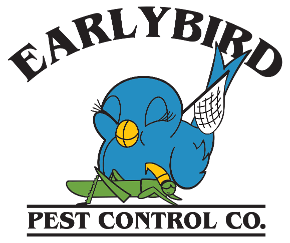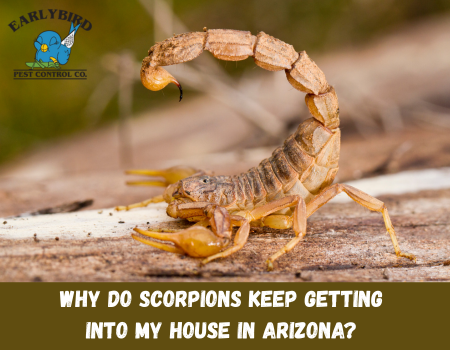If you live in Arizona, encountering scorpions now and then isn’t unusual. But when these creepy crawlers start showing up inside your home more often than you’d like, it quickly shifts from a nuisance to a concern. Arizona’s dry, warm climate makes it habitable for several scorpion species, including the infamous bark scorpion. But why do they keep finding their way into your living space, and what can you do about it? Let’s break it down.
What Attracts Them to Your Home?
Scorpions aren’t invaders without a reason. Like most pests, they’re motivated by basic survival needs: food, water, and shelter. Your home might be unintentionally offering all three.
- Food Sources
Scorpions primarily feed on other insects, like ants, spiders,and roaches. If your home has an existing insect problem, it’s basically an open buffet for scorpions. Even if you don’t see bugs inside, scorpions can detect their presence in walls, basements, and crawl spaces. - Moisture and Water Access
Despite thriving in desert environments, scorpions still need water. They’re drawn to moisture-rich areas like bathrooms, kitchens, laundry rooms, and even air conditioning drip lines. During Arizona’s particularly hot, dry summers, they’re even more likely to sneak inside in search of water. - Shelter from Heat and Predators
Scorpions are nocturnal and seek undisturbed dark and cool places to hide during the day. Cracks in walls, cluttered garages, piles of firewood, or shaded garden areas can serve as perfect hiding spots. When outdoor temperatures climb to triple digits, your home’s cooler interior can feel like an oasis.
How Are They Getting Inside?
Even the smallest openings can act as doorways for scorpions. They’re incredibly agile and can flatten their bodies to squeeze through spaces you wouldn’t expect.
- Gaps under doors and windows
- Cracks in walls, foundations, or baseboards
- Vents and weep holes
- Openings around plumbing or electrical fixtures
- Unsealed attic spaces or garages
Scorpions can also hitch a ride indoors via boxes, firewood, potted plants, or outdoor furniture. It’s not uncommon to unknowingly bring one in while moving items from outside.
Why Are They More Active During Certain Seasons?
Scorpions tend to be most active during the warmer months, typically from March through October. Monsoon season (July–September) often flushes them from their outdoor hiding spots, prompting them to seek drier, safer ground—like your home. Additionally, after dusk, scorpions emerge to hunt, making nighttime encounters more likely.
Signs You Might Have a Scorpion Problem
While seeing one or two scorpions occasionally isn’t unusual, consistent sightings indoors might indicate a bigger issue. Here are a few signs:
- Frequent scorpion sightings, especially in cool, dark areas
- Dead insects around your home (a possible food source for scorpions)
- Shed exoskeletons, which scorpions leave behind as they grow
- Discovering them inside shoes, closets, or bathrooms
How to Keep Pests Out
The good news is, you can take several steps to reduce scorpion visits and create a less inviting environment for them.
- Seal Entry Points
Inspect your home for gaps, cracks, and holes, and seal them using caulk or weatherstripping. Add door sweeps to all exterior doors and check that window screens are secure and free of tears. - Declutter Inside and Out
Clear away stacks of firewood, rocks, and other debris from around your home’s foundation. Indoors, keep storage areas tidy and avoid leaving clothes or towels on the floor where scorpions might hide. - Manage Moisture
Fix leaky pipes, running faucets, or dripping AC units. Think about placing a dehumidifier in moisture-prone areas of your home. - Eliminate Insect Prey
Use pest control treatments to manage insect populations inside and outside your home. Fewer bugs mean less incentive for scorpions to stick around. - Professional Pest Control
If scorpion activity persists, it might be time to call a pest control service. Professionals can apply specialized treatments and conduct home inspections to identify hidden entry points and nesting spots.
Scorpions are a part of Arizona life, but that doesn’t mean you have to live with them inside your home. By understanding what attracts them, how they get in, and when they’re most active, you can take smart, proactive steps to keep them out. Regular maintenance, pest control, and simple household adjustments go a long way in reclaiming your space and peace of mind.


Recent Comments